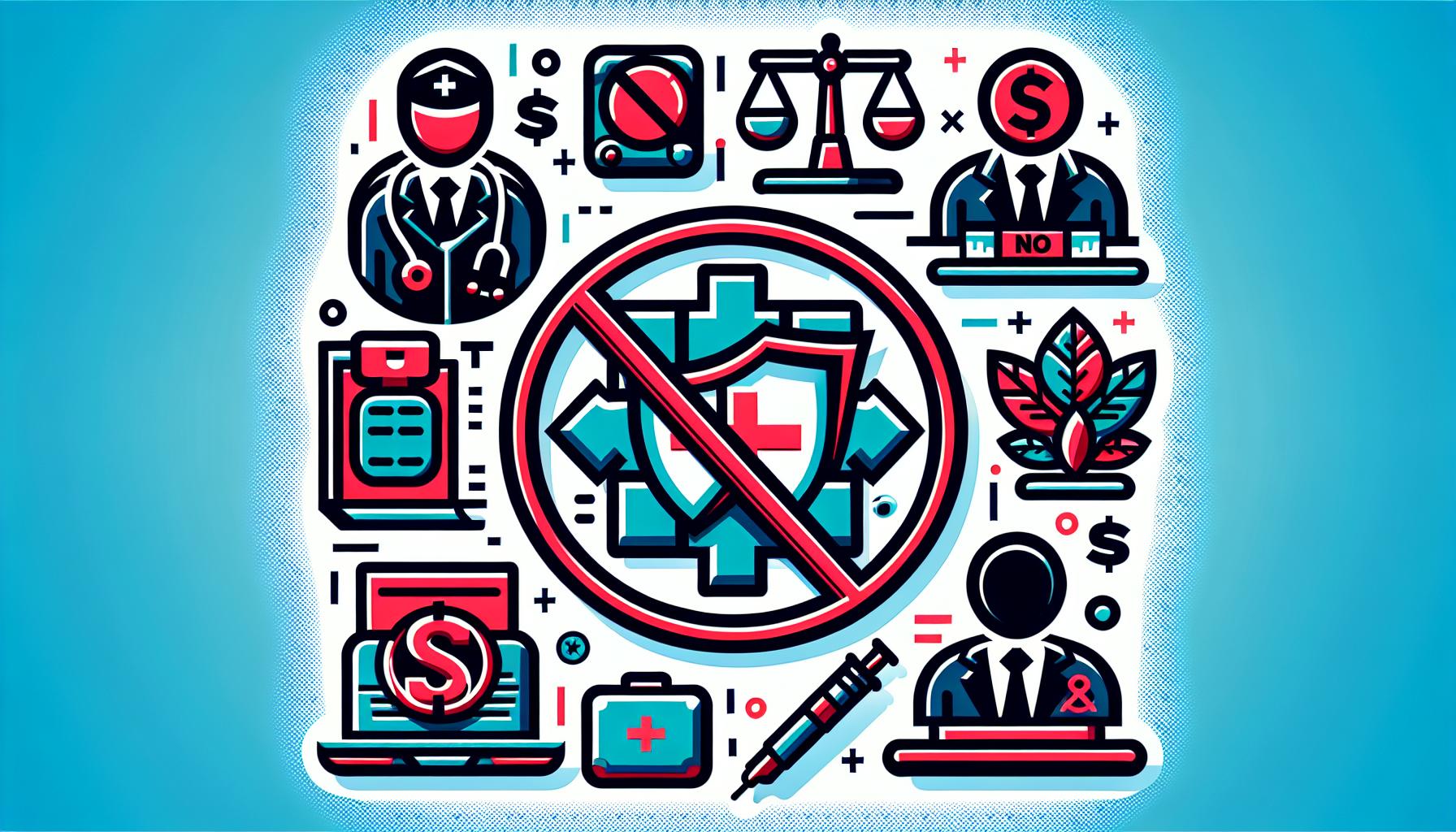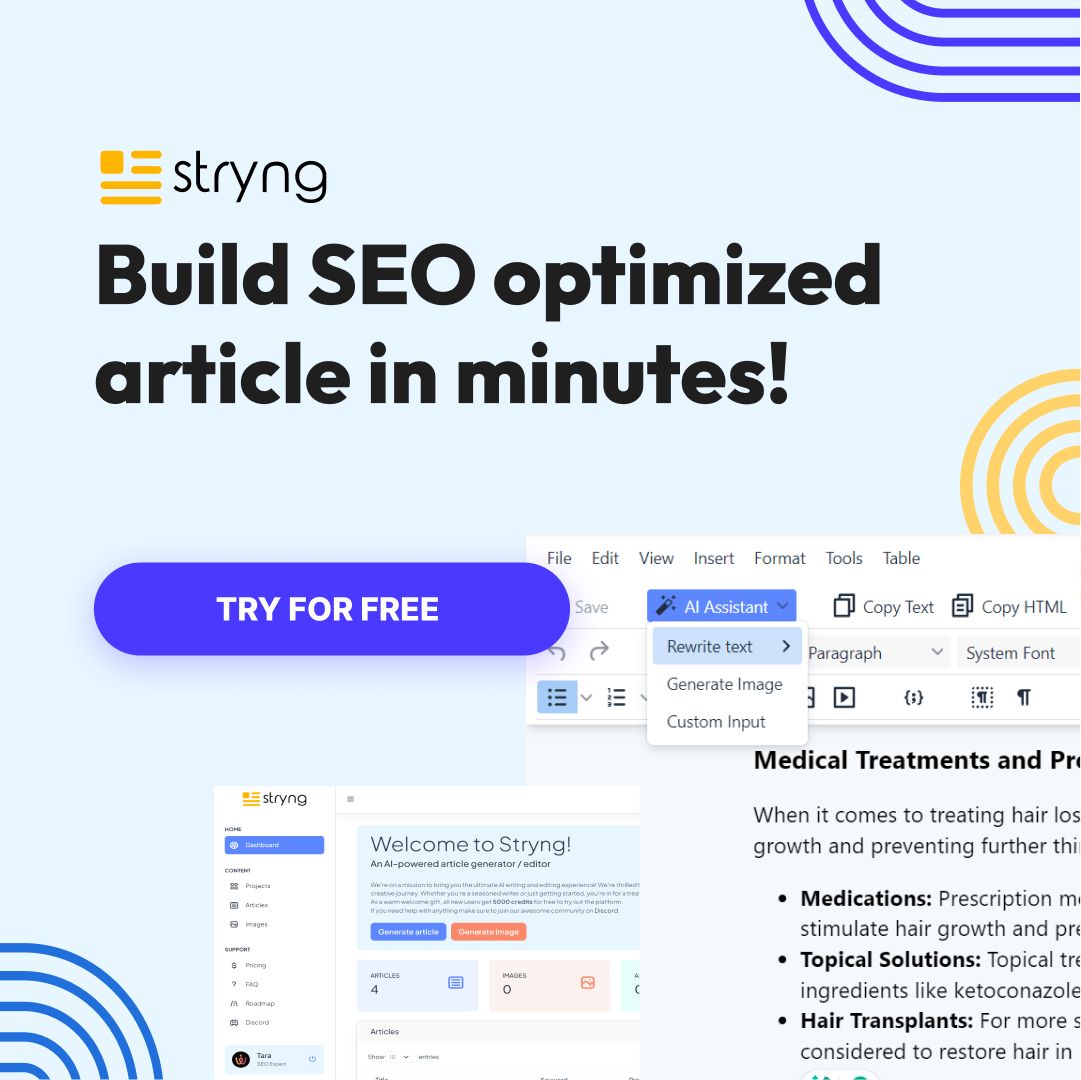ChatGPT is an AI language model developed by OpenAI that excels in understanding and generating human-like text, making it an invaluable tool for content creation.
This article delves into five effective strategies to utilize ChatGPT for content writing, ranging from igniting creativity in brainstorming to enhancing the caliber of both brief and extensive content.
By tapping into the capabilities of ChatGPT, content creators can boost their productivity, uphold high-quality standards, and customize their writing to address the specific needs of their audience.
Whether it involves composing tweets or drafting in-depth articles, learning to integrate ChatGPT into your content strategy can greatly optimize your workflow and elevate your content’s impact.
[blog_key_takeaways]
1. Understanding ChatGPT’s Capabilities
The model’s strength lies in its ability to generate coherent and contextually relevant text based on the prompts it receives.
This capability allows it to serve as an assistant in generating ideas, crafting headlines, and writing meta descriptions, among other tasks.
However, users must provide detailed and specific prompts to guide the AI effectively, ensuring the content remains focused and relevant.
Generating Ideas and Brainstorming with ChatGPT

Utilizing ChatGPT for brainstorming can significantly expedite the creative process. When faced with writer’s block or the need for fresh ideas, users can input a general topic or question into ChatGPT, and the model will generate multiple ideas or angles to explore.
This process can be iterated until a satisfactory number of creative solutions have been developed.
For instance, if a content creator is looking to write about “sustainable living,” they might have the following exchange with ChatGPT:
| Prompt | Response |
|---|---|
| Generate topics related to sustainable living. | Zero-waste practices Sustainable fashion Green technology |
This aids significantly in the ideation phase of content creation.
Creating Compelling Headlines and Titles
Headlines are critical as they influence the first impression and the click-through rate of an article.
ChatGPT can be tasked with creating engaging and eye-catching headlines that draw readers.
By analyzing the input content, ChatGPT can produce multiple headline options that are not only relevant to the content but also optimized for engagement.
Content creators can input a draft of their article or just the topic, and ChatGPT will suggest several headlines that vary in style, tone, and focus, giving the creator a range of choices to best suit their target audience.
Here is how one might generate a list of headlines based on a specific topic:
| Prompt | Response |
|---|---|
| Give me 3 headlines focused on the following topic: ‘Exploring the latest trends in renewable energy and their impact on global markets’ | 1. Harnessing the Future: The Impact of Renewable Energy Trends on Global Markets 2. Green Power Surge: How Renewable Trends are Reshaping Global Markets 3. Renewable Energy Trends 2023: A Global Market Transformation |
Drafting Meta Descriptions and Summaries
Meta descriptions play a crucial role in SEO and user engagement.
They provide a brief overview of the page content, influencing both search engine rankings and user click-through rates.
ChatGPT can assist in crafting concise and informative meta descriptions that highlight the key points of an article while incorporating relevant keywords.
For example, if you need a meta description for an article about sustainable gardening practices, here is how the chat might look like:
| Prompt | Response |
|---|---|
| Generate a concise meta description for an article focused on sustainable gardening practices, including keywords ‘eco-friendly’ and ‘sustainable gardening.’ | Sustainable gardening practices are essential for eco-friendly living. Discover tips and techniques to cultivate your garden sustainably, enhancing biodiversity and reducing waste. |
Similarly, for summaries, whether they are needed for an article, a report, or any other document, ChatGPT can quickly condense the main ideas into a clear and concise format:
| Prompt | Response |
|---|---|
| Summarize this report on the latest market trends in the technology sector, focusing on key findings and recommendations: < paste report here > | The report highlights significant growth in the technology sector, driven by advancements in AI and machine learning. Key recommendations include investing in AI research and development to capitalize on emerging market opportunities. |
2. Using ChatGPT for Short-Form Content Creation

ChatGPT excels in the realm of short-form content creation, where its ability to quickly generate text that is both engaging and relevant comes to the forefront.
This section explores how ChatGPT can be effectively utilized to create dynamic social media posts, compelling email campaigns, and persuasive ad copy.
Social Media Posts
Social media content needs to be both captivating and timely.
ChatGPT assists creators by producing creative and relevant posts that can capture the essence of a brand or message in just a few words.
Users can input current trends, key messages, or promotional content into ChatGPT, and it will craft posts that are tailored to the platform’s audience—whether it’s the brevity of Twitter, the visual focus of Instagram, or the professional tone of LinkedIn.
Here is an example of a chat for generating an Instagram post:
| Prompt | Response |
|---|---|
| Generate an engaging Instagram post for our new eco-friendly skincare line launching next week. | 🌿 Ready to revolutionize your skincare routine? Our new eco-friendly line launches next week! Stay tuned to nurture your skin with the purest ingredients. 🌱 #EcoBeauty #SkincareRevolution |
This not only speeds up the content creation process but also ensures a consistent voice across various platforms.
Email Campaigns and Subject Lines
Email marketing remains a critical tool for customer engagement and conversion.
ChatGPT can be utilized to generate subject lines that increase open rates through curiosity or urgency.
By analyzing the content of the email, ChatGPT can suggest subject lines that are concise and intriguing, encouraging recipients to explore further.
For example, if the email content discusses a limited-time offer on a popular product, a chat with ChatGPT could be:
| Prompt | Response |
|---|---|
| Generate a subject line for an email about a 24-hour sale on winter jackets. | Hurry! Only 24 Hours Left to Grab Your Cozy Winter Jacket at a Discount! |
Furthermore, for the body of the email, ChatGPT can help formulate messages that are clear and direct, enhancing the communication strategy by ensuring key points are conveyed efficiently and effectively.
For instance, if you need to write an email promoting a new blog post, you might do it like this:
| Prompt | Response |
|---|---|
| Compose a concise email body for promoting our latest blog post on sustainable gardening practices. | Discover eco-friendly ways to beautify your garden with our latest blog post on sustainable gardening! Dive into tips and tricks that help you garden smarter, not harder. Read now! |
Ad Copy
Creating ad copy that resonates with an audience and drives action is a nuanced art.
ChatGPT can assist marketers by generating various versions of ad copy that align with the campaign’s goals, whether it’s to inform, entertain, or persuade.
The AI can produce copy for different demographics and psychographics, allowing for A/B testing of messages to determine which performs best.
This capability is invaluable for optimizing advertising spend and maximizing ROI.
By inputting the product details, target audience, and key benefits, users can rely on ChatGPT to deliver ad copy that not only grabs attention but also converts interest into action.
Example of a prompt and a response:
| Prompt | Response |
|---|---|
| Generate a compelling ad copy for a new eco-friendly water bottle targeting health-conscious consumers aged 25-35. | Meet the future of hydration: our EcoBottle! 🌍💧 Crafted for the health-savvy individual, this 100% recyclable water bottle keeps you hydrated while caring for our planet. Join us in making a difference—one sip at a time. Perfect for your active lifestyle, from yoga to hiking. Grab yours today and taste the purity of sustainability! |
3. Enhancing Long-Form Content with ChatGPT

Outlining and Structuring Articles
When tackling long-form content, the initial step of outlining and structuring is crucial.
ChatGPT aids writers by generating comprehensive outlines that serve as a blueprint for the entire piece.
Users can input a central topic, and ChatGPT will suggest a logical flow of sections and subsections, ensuring that all critical points are covered.
| Prompt | Response |
|---|---|
| Generate an outline for an article about sustainable gardening practices. | 1. Key Sustainable Gardening Techniques 2. Composting 3. Water Conservation 4. Choosing the Right Plants 5. Benefits of Sustainable Gardening 6. Environmental Impact 7. Cost-Effectiveness 8. Enhancing Biodiversity 9. Case Studies 9.a. Example 1: Urban Sustainable Garden 9.b. Example 2: Rural Sustainable Farming 10. Conclusion 11. Summary of Key Points 12. Future Outlook in Sustainable Gardening |
This structured approach helps maintain coherence throughout the article, making it easier for readers to follow and for search engines to index effectively.
Additionally, by setting a clear outline, writers can avoid common pitfalls such as tangential sections or unbalanced content distribution.
Writing Introductions and Conclusions
Introductions and conclusions serve as critical bookends in long-form articles, shaping the reader’s experience and emphasizing essential messages.
ChatGPT excels at crafting engaging introductions that grab the reader’s attention and clearly outline the article’s purpose.
For instance, when provided with a summary of the article, ChatGPT can generate an engaging hook and an overview of what the reader can expect.
This sets the tone for the entire piece. Here’s an example:
| Prompt | Response |
|---|---|
| Create an introduction for an article about sustainable gardening practices. | As the planet faces environmental challenges, sustainable gardening emerges as a beacon of hope. This article explores practical ways to cultivate your garden while minimizing environmental impact, ensuring that your green space contributes positively to the earth. |
Similarly, for conclusions, ChatGPT can effectively summarize the main points and suggest a call to action or a concluding thought, providing closure and enhancing the article’s impact. Here’s how it can work:
| Prompt | Response |
|---|---|
| Summarize an article about the benefits of remote work and suggest a call to action. | Remote work offers flexibility, reduces commute stress, and can lead to increased productivity. As businesses continue to evolve, adopting remote work can be a key strategy for success. Consider how implementing remote work policies could benefit your organization and start planning your approach today. |
By utilizing ChatGPT in this manner, content creators can ensure that their articles are both inviting and memorable, encouraging readers to engage fully with the content.
Avoiding Repetitiveness in Long-Form Content
One of the challenges in long-form content is avoiding repetitiveness, which can disengage readers and harm SEO performance.
ChatGPT assists in identifying repetitive phrases and suggesting synonyms or alternate expressions to enhance the article’s readability and engagement.
For instance, if a writer frequently uses the phrase “effective solutions,” they might ask ChatGPT:
| Prompt | Response |
|---|---|
| Can you suggest different ways to say ‘effective solutions’ in my article? | Sure, you could use ‘efficient solutions,’ ‘practical solutions,’ ‘viable solutions,’ or ‘successful strategies.’ |
Moreover, by analyzing the entire text, ChatGPT can point out sections that may seem redundant and propose more concise ways to present the same information.
This capability ensures that the content remains fresh and engaging throughout, holding the reader’s attention and improving the overall quality of the article.
4. Optimizing Content Quality

Fact-Checking and Editing
While ChatGPT excels in generating initial drafts and creative content, the accuracy of the information provided can vary, especially in specialized fields.
Therefore, it is imperative for content creators to engage in rigorous fact-checking and editing processes.
Fact-checking involves verifying the factual accuracy of the content against reliable sources, especially when dealing with data, statistics, or specific claims.
This step is crucial to maintain credibility and trustworthiness.
Editing, on the other hand, extends beyond correcting grammatical errors.
It involves refining the clarity, tone, and style of the content to ensure it aligns with the intended message and audience expectations.
Editors should also assess the logical flow of information, coherence of ideas, and the overall readability of the text.
Utilizing ChatGPT in conjunction with professional editing tools can streamline this process, enabling writers to produce polished, high-quality content efficiently.
Example of a prompt and a response:
| Prompt | Response |
|---|---|
| Provide a summary of the latest trends in renewable energy. | Renewable energy is seeing significant growth, particularly in solar and wind sectors. Innovations in battery storage technology and government incentives are driving adoption. However, challenges such as supply chain disruptions and regulatory hurdles persist. |
Tailoring Content for Specific Audiences
Understanding and addressing the unique preferences and needs of different audience segments is key to effective content writing.
ChatGPT can assist in customizing content to resonate with specific groups by adjusting the language, tone, and examples used in the text.
For instance, technical jargon may be appropriate for a professional audience but should be simplified for general readers.
To tailor content effectively, writers should first define their target audience’s demographics, interests, and pain points.
This information can guide the customization process, ensuring that the content not only attracts but also retains the audience’s attention.
ChatGPT can then be prompted to generate text that speaks directly to these characteristics, whether it’s creating engaging narratives for young adults or detailed explanatory content for industry professionals.
By combining ChatGPT’s capabilities with a deep understanding of audience dynamics, content creators can produce material that is not only relevant and engaging but also deeply aligned with the audience’s expectations and preferences.
This tailored approach significantly enhances the effectiveness of the content, boosting engagement and conversion rates:
| Prompt | Response |
|---|---|
| Generate a blog introduction for young adults interested in sustainable living practices. | As the planet faces unprecedented environmental challenges, young adults around the world are stepping up to lead the charge in sustainable living. From minimizing waste to embracing eco-friendly innovations, discover how you can make a significant impact with simple, everyday choices. Let’s explore practical tips and inspiring stories that resonate with your passion for a greener future. |
This example demonstrates how ChatGPT can be used to create content that is specifically tailored to the interests and values of a defined audience segment.
5. Leveraging ChatGPT in Specialized Fields

Understanding Limitations in Technical Topics
ChatGPT, while robust in general content creation, encounters limitations when addressing specialized fields such as healthcare, finance, and legal matters.
These areas require not only factual accuracy but also a deep understanding of context, regulations, and technical jargon.
The AI model may generate content that is superficial or not fully compliant with industry standards due to its training on a diverse but generalized dataset.
For instance, in healthcare, ChatGPT might not be updated with the latest medical research or sensitive to the nuances of medical terminology, potentially leading to inaccuracies.
Supplementing Expert Knowledge
To effectively use ChatGPT in specialized fields, it is essential to combine its computational power with the expertise of industry professionals.
This hybrid approach leverages ChatGPT’s efficiency and the expert’s deep knowledge to produce content that is both accurate and engaging.
For example, a financial analyst could use ChatGPT to draft a report on market trends and then refine the analysis and ensure accuracy of the data before publication.
Similarly, in legal writing, a lawyer might use ChatGPT to draft a contract based on standard templates and then meticulously review and tailor the document to meet specific legal requirements.
This strategy ensures that the final content is not only produced faster but also meets the high standards necessary for professional use.
Go-To Solution for Long Form Content

For those tackling long-form content, Stryng stands out as a powerful ally, greatly enhancing the capabilities of ChatGPT.
Stryng not only matches ChatGPT’s capabilities in initiating drafts and establishing a foundational structure but also enhances these drafts into SEO-optimized articles, offering a comprehensive solution for content creation.
Stryng is also equipped with an advanced outline builder.
This tool is essential for ensuring a logical progression and thorough exploration of the subject matter, which are vital for keeping readers engaged and boosting SEO performance.
Moreover, Stryng includes editing tools that facilitate easy adjustments with the help of an integrated AI Assistant that transforms and improves content with a single click of a button.
These tools help ensure that the final content is not only compelling to read but also adheres to SEO best practices.
The synergy between AI-driven creativity provided by ChatGPT and the focused SEO enhancement and automation from Stryng creates a robust framework.
This framework is particularly beneficial for bloggers and content creators who aim to minimize writing and editing time, streamlining their workflow for maximum efficiency.
Final Thoughts on Using ChatGPT for Content Writing
ChatGPT emerges as a dynamic tool for content creators, particularly effective in streamlining the generation of short-form content such as social media posts, emails, and other brief communications.
Its ability to quickly produce contextually relevant text makes it indispensable for tasks like brainstorming, crafting engaging headlines, and drafting concise meta descriptions.
For those engaged in creating long-form content that is ready to publish with little or no editing, the integration of SEO-focused tools such as Stryng becomes crucial.
This strategic combination of AI and specialized software ensures that both short and long-form content achieve their maximum potential in the digital space.



